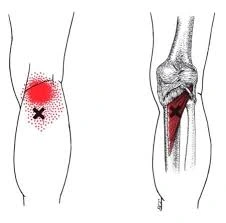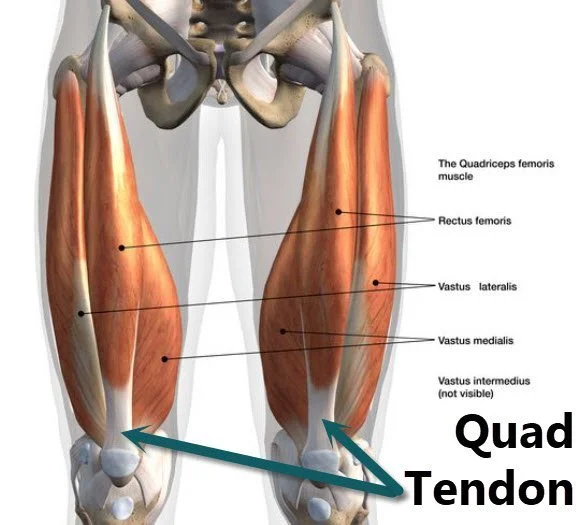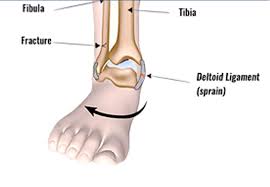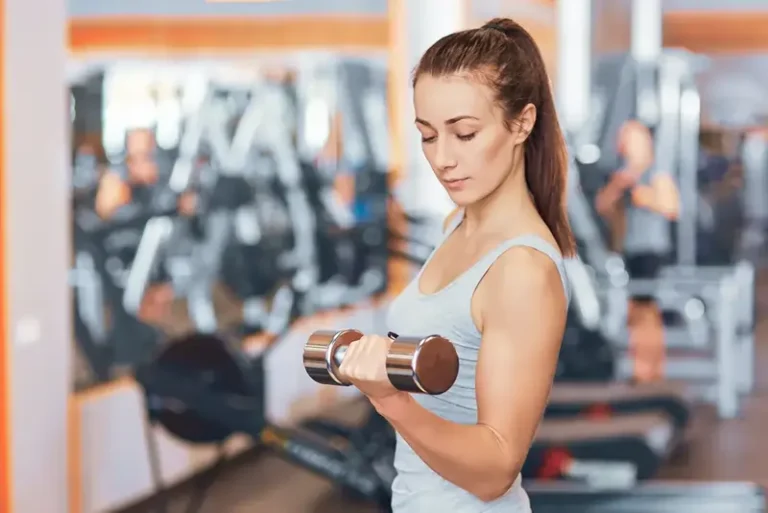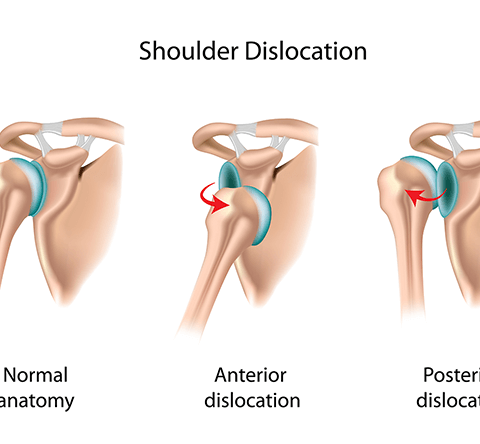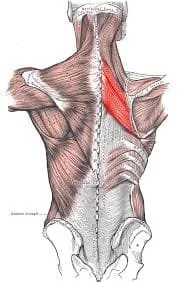Popliteus Muscle Pain
What is a Popliteus Muscle Pain?
Popliteus muscle pain refers to pain or injury affecting the popliteus muscle, a small but crucial muscle located at the back of the knee. This muscle plays a key role in knee stability and unlocking the knee joint during movement.
Popliteus muscle injuries are rarely isolated; instead, they are frequently linked to other injuries affecting the posterolateral corner of the knee, such as meniscal tears, anterior cruciate ligament injuries, posterior cruciate ligament injuries, or lateral collateral ligament injuries.
An injury to the gastrocnemius muscle in your calf, a popliteal cyst or Baker’s cyst, or an injury to the hamstring muscles in the back of your thigh can all result in pain at the back of your knee.
There is another, less frequent, and occasionally disregarded cause, though. a strain or tendinopathy of the popliteus muscle. A tiny, triangular muscle at the rear of your knee is called the popliteus.
People with popliteal problems often experience pain in the back and outer regions of the knee, which is often worse when walking downhill, bending the knee against resistance, and running. The area behind the knee is often swollen and tender to the touch, and if the tendon is involved, there may be a crackling sound with movement. If an athlete continues to overwork the knee with this injury, the symptoms will worsen and the healing process will be delayed.
Anatomy of Popliteus Muscle Pain?
The distal muscular attachment is called the insertion, while the tendinous proximal (femoral) attachment is called the origin, making the Popliteus Muscle tendinous unit unique. Above the soleal line, the muscle inserts into a triangular region along the posteromedial portion of the proximal tibial metaphysis.
The popliteus fossa’s floor is formed by it. The popliteus tendon enters the knee joint through the popliteal hiatus and inserts into the lateral femoral condyle at the end of the popliteal sulcus. Variable aponeurotic attachments to the posterior horn of the lateral meniscus and the fibular head allow the major tendinous component to penetrate into the lateral femoral condyle.
The femoral insertion is crescent shaped, with the superior aspect concave. The insertion into the lateral meniscus retracts and protects the meniscus in flexion, though this function has been disputed.
Causes of Popliteus Muscle Pain?
Most often, runners and triathletes who compete on hills or uneven terrain, as well as downhill skiers, suffer from popliteus muscle strains and tendinopathies. A direct hit to the inside of the knee or an abrupt, violent overextension or overstraightening of the knee are the usual causes of damage. Poor dynamic stability and muscle weakness can make training more likely to result in injury.
- Repetitive stress or overuse
- Due to frequent knee flexion and rotation, this condition is common in sports (runners, bikers, and skiers).
- Direct Injury or Trauma
- The popliteus muscle may be strained by a blow to the rear of the knee, such as occurs during contact sports or falls.
- Hyperextension of the Knee
- The popliteus is strained when the knee is too straightened, as occurs during abrupt stops or jumping.
- Inappropriate footwear or problems with biomechanics
- Inappropriate footwear, overpronation, or poor foot alignment can all contribute to knee pain.
- Ligament Damage (PCL/ACL Sprains or Tears)
- The popliteus aids in knee stabilization, and compensatory strain may result from ligament damage.
- Meniscus Damage
- Injuries to the popliteus muscle might result in pain because of its close relationship to the lateral meniscus.
- Calves or Hamstrings Tight
- Unbalanced knee muscles might put too much strain on the popliteus.
- Weak Hip or Quadriceps Muscles
- Overuse of the popliteus might result from weakening of these muscles.
- Knee Osteoarthritis
- The popliteus muscle may become irritated by joint deterioration, resulting in pain.
- Unexpected Shifts in Activity Level
- Overloading the muscle can occur when the intensity, frequency, or duration of a workout is rapidly increased.
Symptoms of Popliteus Muscle Pain?
- The back of the knee pain
- acute or aching pain in the popliteal area, particularly when the knee is bent or straightened.
- Pain When Strolling Downstairs or Downhill
- increased pain because of the popliteus’ function in knee stability when descending stairs or slopes.
- Edema or Sensitivity
- back of the knee pain and mild swelling, particularly after exercise.
- Tightness or Stiffness
- a stiffness behind the knee that makes it hard to move.
- Pain When Rotating the Knee
- pain during turning or pivoting since knee rotation is controlled by the popliteus.
- Pain Getting Worse with Activity
- Walking, running, or sitting for extended periods of time may exacerbate symptoms.
- Knee instability sensation
- The knee may feel weak or give out, especially when shifting directions.
- Pain During Extended Sitting
- After holding the knee bent for long periods of time, pain may develop.
Diagnosis of Popliteus Muscle Pain?
Medical History & Physical Examination
A medical professional will inquire about:
- The onset and intensity of the pain.
- Things that make the pain worse or better.
- history of knee ailments or injuries, such as arthritis or torn ligaments.
- challenges with running, walking, or climbing stairs.
- Throughout the physical examination, they might:
- To feel for pain, press or palpate the back of the knee.
- To evaluate muscular function, conduct resistance, rotation, and knee flexion tests.
- Examine biomechanics and gait for abnormal movement patterns.
Special Clinical Tests
- In the Garrick Test, the patient externally rotates the leg and bends the knee while the physician applies resistance; pain indicates popliteus involvement.
- Active Knee Flexion Test: Popliteus strain may be indicated by pain during resisted knee flexion.
Imaging Tests
- X-ray: Disqualifies arthritis, fractures, and other disorders affecting the bones.
- Real-time ultrasound detection of muscle or tendon inflammation.
- The most effective diagnostic for identifying soft tissue injuries, such as meniscus tears, ligament damage, or popliteus muscle strains, is magnetic resonance imaging, or MRI.
- Doctors may rule out the following because popliteus muscle pain might mirror other conditions:
- Baker’s cyst, or accumulation of fluid behind the knee.
- Tear in the meniscus (pain when twisting).
- Pain that travels up the back of the leg is known as hamstring tendinopathy.
- knee ligament damage, such as tears or sprains of the ACL or PCL.
Treatment of Popliteus Muscle Pain:
Immediate Treatment
- Rest: keep away of exercises like deep squats and running that exacerbate the pain.
- Ice Therapy: To lessen inflammation, apply ice packs for 15 to 20 minutes every two to three hours.
- Compression: To reduce swelling and offer support, apply an elastic bandage or knee brace.
- Elevation: To lessen swelling, keep the knee up.
Medications
- Ibuprofen and naproxen are examples of non-steroidal anti-inflammatory drugs (NSAIDs) that can help lower pain and swelling.
- Pain relievers: If NSAIDs are not appropriate, acetaminophen may be used.
Advanced Treatments
- Injections of corticosteroids may be recommended if inflammation is severe and ongoing.
- Surgery is only required in rare instances for complicated knee injuries involving the popliteus, such as meniscus damage or ligament tears.
Supportive Measures
- Extra support is provided by knee braces or taping, particularly during activities.
- Proper footwear and orthotics minimize strain and guarantee proper knee alignment.
Physical Therapy of Popliteus Muscle Pain:
When the popliteal muscle is injured or damaged, rehabilitation helps to relieve knee pain and restore function. Naturally, lowering pain and inflammation is the aim of the exercises. In order to lessen the strain of walking or jogging on the popliteus muscle, exercises can help strengthen the muscles surrounding your knee.
Popliteus muscle exercises may improve proprioception, balance, and agility by strengthening other lower limb muscles, such as the calves, hips, and pelvic muscles. Your technique and function when you resume full exercise in running, squatting, jumping, and walking can also be improved by strengthening and rehabilitating this muscle. According to the American Academy of Orthopaedic Surgeons, it might also aid in preventing further injuries.
Supine Hamstring Stretch
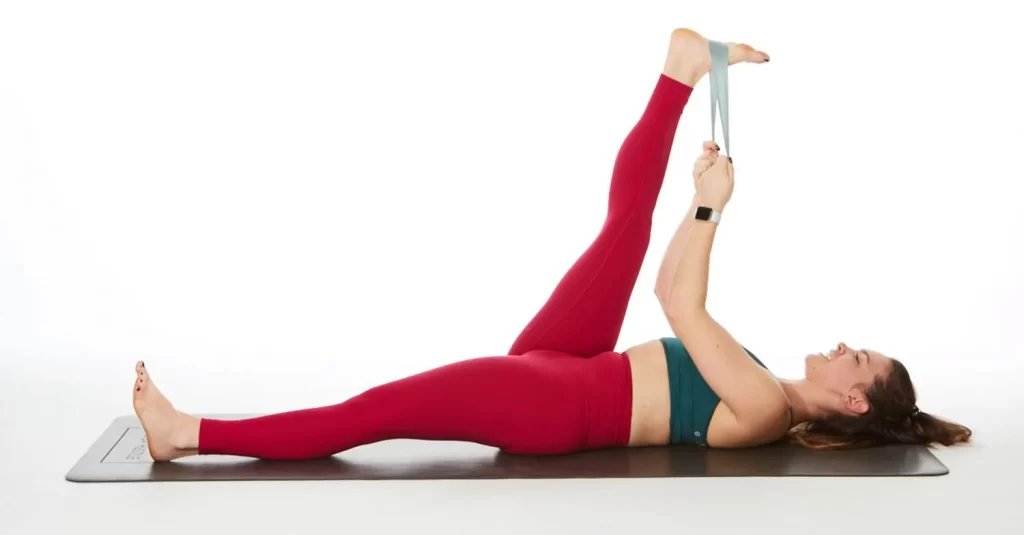
- Using both hands, grasp the back of your right thigh as you bring it in toward your chest.
- Pull the leg slowly toward your head, lengthening it toward the ceiling.
- Repeat on the other side after 30 to 60 seconds of holding.
Half Squats
- Your feet should be hip-distance apart. Use the back of a chair or a wall for balance if you feel unsteady.
- As you softly bend through your hips and knees, keep your spine long and your chest raised. As though you were sitting toward a chair, let your hips to bend by about ten inches. Keep your weight on your heels and your feet firmly planted.
- Return to a standing position after pausing for three to five counts.
- Do this ten or twelve times.
Heel Cord Stretch
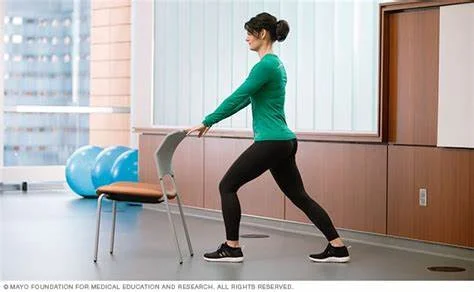
- Face a wall.
- Put your healthy leg in front of you and slightly bend your knee.
- Position the affected leg directly behind you, with the toes slightly pointed and the heel flat.
- Press your hip complex forward, toward the wall, while keeping your heels flat on the ground.
- Wait 30 seconds.
Standing Quadriceps Stretch
- For stability, place your hands on the back of a chair while standing behind it.
- Pull the heel up toward your right buttocks while bending your right knee.
- Using your right hand, grasp your ankle and draw it nearer to your torso.
- Hold for 30 to 60 seconds. Continue on the opposite side.
Leg Extensions
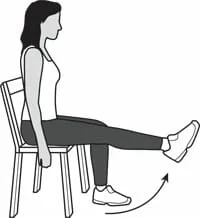
- Take a seat at the edge of a straight-backed, firm chair.
- Raise your right leg as high as you can while straightening it and contracting your thigh muscles.
- For roughly five seconds, hold the raised leg aloft.
- Lower the leg back toward the floor after relaxing it.
- Perform on the other side and repeat 10 to 15 times.
Hamstring Curls
- Stand with your back to a chair. Hold on for assistance.
- Raise the heel of your right knee as far as it can go toward the ceiling while bending it behind you. If pain arises, stop.
- Hold for five seconds. Do this ten to fifteen times. On the other leg, perform.
Calf Raises
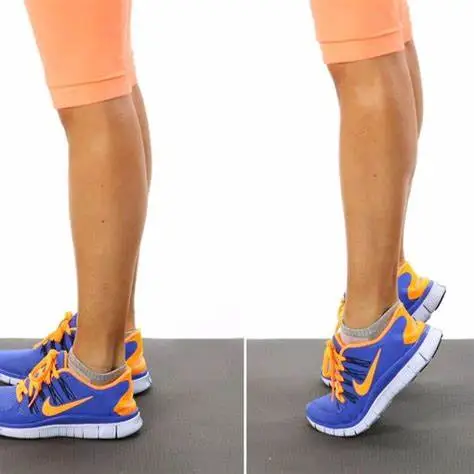
- Hold on for balance as you stand facing the back of a chair.
- Your weight should be properly distributed over both feet.
- Put all of your weight on your right foot and bend your left knee behind you.
- As high as you can, lift your right heel, then slowly bring it down.
- Do this ten times.
Conclusion of Popliteus Muscle Pain:
Knee stability and mobility can be impacted by popliteus muscle pain, which can be caused by overuse, poor biomechanics, or unexpected injury. Strengthening the surrounding muscles, preserving flexibility, employing appropriate movement mechanics, and avoiding undue knee strain are all ways to prevent this pain.
Stretching, appropriate footwear, and adequate warm-ups are all essential for lowering popliteus stress. To address underlying reasons and avoid other issues, it can be helpful to seek expert examination if pain continues. People can preserve knee health and keep away from pain from popliteus muscle tension by implementing these preventive actions.
FAQs
If I have popliteus pain, can I still run?
For at least the first six weeks, patients should limit their involvement in sports and refrain from running or skiing until their knee is pain-free. You can gradually resume playing once you are pain-free.
What is the popliteus muscle surgery?
The best course of action for treating an avulsed popliteus tendon in the knee joint is surgery. Over the injured tendon, an incision is created on the knee’s side. The bone and tendon may be screwed back onto the femur bone if the avulsion fracture is new (occurred within a week).
How is the popliteus massaged?
You will need a ball in order to massage the Popliteus. Place your legs straight out in front of you while you sit on the floor. With your hands back behind you for support, place the ball about two fingers below the back of your knee. Apply a little pressure on the ball.
What is the severity of a popliteus strain?
Knee instability is rarely caused by isolated popliteal injuries, and non-operative treatment is typically recommended, incorporating early weight bearing and functional rehabilitation. Nevertheless, no particular regimen for non-operative rehabilitation has been established. One possible form of rehabilitation is cryotherapy.
Is the popliteus muscle deep?
Owing to its deep location, popliteus muscle injuries are uncommon on their own but can be linked to other knee problems such meniscus and ACL tears.
What is Popliteus’ primary purpose?
During the closed chain phase of the gait cycle (the one in which the foot touches the ground), the popliteus muscle in the leg is employed to laterally rotate the femur on the tibia, releasing the knees during walking.
How can popliteus pain be resolved?
Rest, ice application, elevation, an elastic bandage, physical therapy, and nonsteroidal anti-inflammatory painkillers like ibuprofen or aspirin are all part of the treatment for popliteus tendinopathy. Corticosteroid injections or oral corticosteroids may be used as additional treatments for popliteus tendinopathy.
Why is the muscle in my popliteus so tight?
The signs, causes, diagnosis, and treatments of popliteus tendinitis
The popliteus may experience additional strain if the foot rolls inward (over-pronation), has a low arch, or is flat. running athletes that haven’t warmed up properly before participation.
Can popliteus be massaged?
Massaging oneself, Popliteus
Now apply pressure on the lateral side of the calf and the lower lateral side of the knee hollow. Look for any painful tensions by running your thumbs over the muscle. The skin must be moved over the muscle, but it must not slide over the muscle.
How is the popliteus muscle tested?
Strain of Popliteus
The patient is seated during the exam, and both hips and knees are flexed to 90 degrees. The examiner resists the patient’s vigorous outward rotation of the lower leg. Pain during the popliteus muscle or tendon motion indicates a positive test.
Can someone with a popliteus strain walk?
Strain of Popliteus
A popliteus muscle strain can result in mild to severe pain in the fold of your leg near the rear of the knee. Pain will worsen if you run a lot or walk downward. Your pain may worsen if you rotate your knee or stand with it slightly bent.
Which exercise works best for the popliteus?
mobility. The popliteus stretch is a great mobility exercise. Cross the leg you wish to stretch over your other knee while seated. Targeting the popliteus muscle, press the knee downward with the other hand while holding the ankle with the other for stability.
How much time does it take for a popliteus strain to recover?
The majority of these wounds heal without any more problems or complications. After completing a functional assessment, the patient can resume full physical activity without any limitations, and recovery time may range from three to sixteen weeks.
How does a popliteus muscle strain feel?
Back and outer knee pain are common in people with popliteal problems. When bending the knee against resistance or fully straightening it, pain is frequently experienced. Pain is typically worse when jogging, climbing stairs, and walking downhill.
How can popliteus pain be relieved?
Advice for Treating a Popliteus Muscle Injury
Ice and Rest: To lessen inflammation, stay away from physically demanding tasks and use ice.
Compression and Elevation: Keep your leg elevated and apply a compression bandage.
Strength Training Activities: Step-Ups: By stepping up on an elevated platform, you can strengthen the popliteus.
References
- Digital, R. (2021, February 19). Pain behind the knee: popliteus strain and/or tendinopathy. Burlington Sports Therapy. https://burlingtonsportstherapy.com/blog/pain-in-the-back-of-the-knee-popliteus-strain-and-or-tendinopathy/
- Abelson, B., DC. (2024, August 8). Popliteus muscle – “The key of the knee.” msrsite. https://www.motionspecificrelease.com/post/2019/06/19/popliteus-muscle-e2809cthe-key-of-the-kneee2809d

